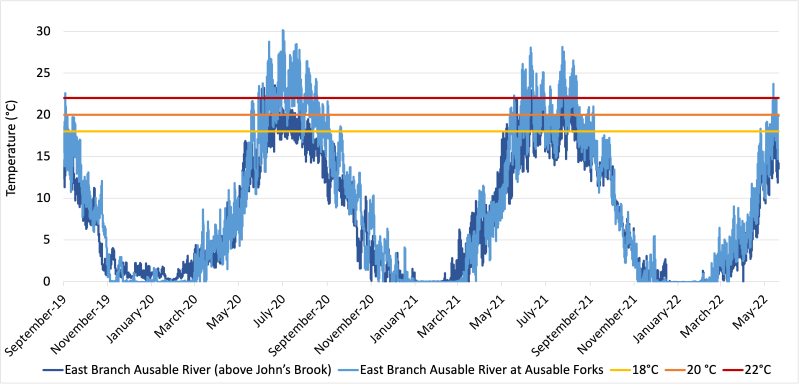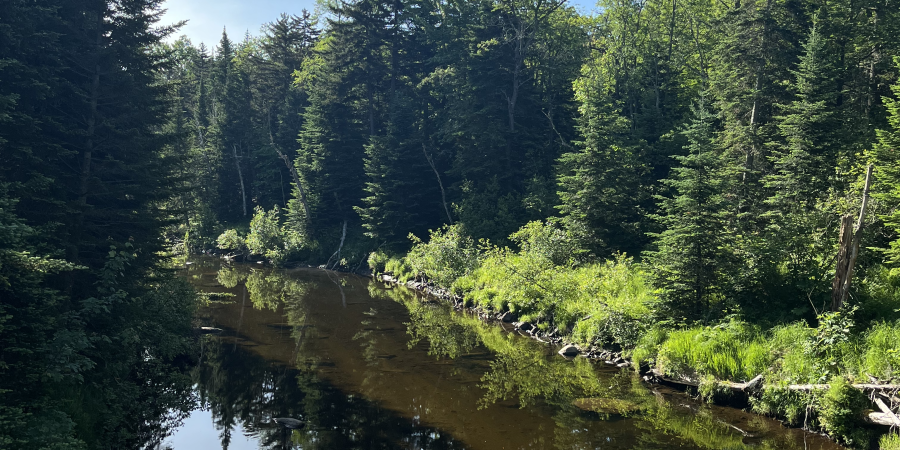In the Ausable River watershed, 25 in-stream temperature loggers quietly log data year-round at 1-hour intervals. This network, established in 2015 and expanded in 2018, collects baseline data, tracks long term climate change, and helps scientists understand the effects of in-stream and riparian restoration. Loggers track both summer's high temperatures and winter's lows. The graph below presents a slice of data - differences in temperature (recorded in Celsius) over two years at two loggers far upstream and far downstream on the East Branch Ausable River.

A snapshot of our temperature logger data for the East Branch Ausable River above John's Brook and at Ausable Forks for September 2019- May 2022.
Here's a quick takeaway. The narrow upstream section of the East Branch above Johns Brook in Keene Valley (the dark blue line in our graph) has dense riparian cover - more shade keeping temperatures cooler during hot summer days. It also benefits from the cool higher elevation tributary waters feeding it. A wider shallower downstream section of the river, the East Branch just above Ausable Forks (light blue), has less tree cover, is more distant from those cooling high elevation tributaries, and has higher temperatures. The East Branch Ausable River above Johns Brook stayed on average 3.6 degrees cooler than the East Branch Ausable River at Ausable Forks from June-September.
Support our water quality work for clean water. Give with confidence today!
But what does that mean? Warming temperatures create challenges for many species. Brook trout, a key species in the Ausable watershed, provide one example. Their health is tied to the health of our waterways. Optimal brook trout temperatures are between 16-18°C. Brookies become stressed at 18°C. Stress leads to decreased feeding, reduced metabolism, and other physiological effects. 24.5°C is lethal. During the warmest parts of the summer, temperatures at the East Branch Ausable River at Ausable Forks were lethal for brook trout. Temperatures at the East Branch Ausable River above John's Brook were slightly cooler, but still stressful. Brook trout and some other temperature sensitive species can utilize cooler tributaries in summer months, but these waters are warming as well. Overall, warmer water temperatures mean less available habitat and greater chance for mortality among temperature sensitive riparian species - fish, amphibians, and reptiles.
Understanding where waters are warming in the watershed, how protection and restoration efforts can have a cooling effect, and what the long-term suitability of the Ausable and its tributaries may be as habitat is essential to efficient and effective conservation.
Story by Leanna Thalmann, Water Quality Associate.
Sign-up for our e-newsletter to get weekly updates on the latest stories from the Ausable River Association.





